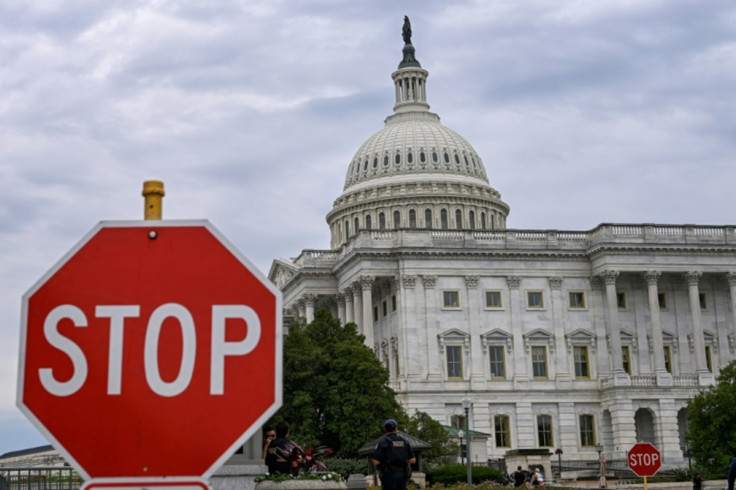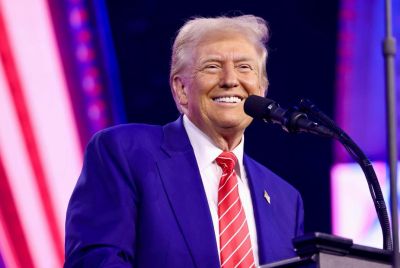US Government Shutdown Latest Update — White House Hints At Breakthrough 'Within Days'
A senior White House adviser says the 20-day U.S. federal government shutdown could end this week

The 20-day United States federal government shutdown could end this week, according to a senior White House adviser, raising cautious optimism that a deal to restore public services may soon be within reach.
The shutdown began on 1 October after Congress failed to approve spending bills for the 2026 fiscal year, triggering widespread disruption across government departments. Around 900,000 federal employees have since been placed on unpaid leave or are working without pay, while services at national parks, research agencies and regulators have been scaled back.
White House economic adviser Kevin Hassett told CNBC that he believed the political stalemate was likely to end in the coming days, though no formal agreement has yet been reached. The comment has injected new hope into negotiations that have so far been marked by deep partisan divisions between Republicans and Democrats in Congress.
Funding Deadlines and Political Deadlock
The deadlock stems from disagreements over the renewal of enhanced health subsidies under the Affordable Care Act (ACA). Democrats insist that any temporary funding measure must include an extension of those subsidies, while Republicans argue that the provisions are too costly and are pushing for a 'clean' funding bill without new spending.
Several attempts to pass short term funding bills have failed in the Senate, where a recent Republican-backed proposal was rejected by a 51–45 vote, according to CBS News. Each side has blamed the other for prolonging the crisis. President Donald Trump and Republican leaders have accused Democrats of using the ACA as leverage, while Senate Democrats contend that the administration's budget plan would impose unacceptable cuts to health and social care programmes.
The White House has sought to balance its messaging, maintaining public pressure on opponents while signalling some readiness to compromise. Analysts say this shift reflects growing concern over the economic fallout of the shutdown and the political damage it could cause if it continues beyond October.
White House Signals Optimism
Hassett said that moderate voices in Congress believed a breakthrough could occur before the end of the week. His comment followed nationwide 'No Kings' rallies, where protesters gathered to denounce what they saw as executive overreach, Reuters reported.
Observers suggest the White House may see an opening for agreement now that the demonstrations have concluded. However, Democrats continue to demand guarantees on healthcare funding, while divisions within the Republican caucus complicate negotiations.
The administration has also begun exploring limited budgetary steps to sustain key functions such as military pay, though other departments remain without funds. The longer the impasse lasts, the more agencies are forced to scale back services, adding to public frustration.
It’s been 20 days since the government shutdown started.
— Democrats (@TheDemocrats) October 20, 2025
Republicans are still refusing to come to the table to negotiate about Americans’ health care.
Today marks day 20 of the Republicans’ shutdown, and unfortunately, they’ve decided that staying on vacation is more important than getting back to D.C. to open the government.
— Congresswoman Jasmine Crockett (@RepJasmine) October 20, 2025
I guess they wanted a little fall break?
Well, the American people don’t get a break—from missed…
Donald Trump is now officially demolishing part of the White House to make room for his $200 million golden ballroom.
— No Lie with Brian Tyler Cohen (@NoLieWithBTC) October 20, 2025
This comes as Americans can’t afford groceries and the government is still shut down. pic.twitter.com/0NZlxgdMfk
Political Divides Remain
Despite the more optimistic tone, major obstacles persist. Senate Republicans still need some Democratic support to pass any funding measure, and internal disagreements over spending levels have slowed progress. Economists warn that a prolonged shutdown could slow growth, delay government contracts and weaken consumer confidence.
With ACA subsidies set to expire at year-end, both parties face mounting pressure to strike at least a temporary deal. For now, the White House's suggestion that the shutdown could end 'this week' offers only a tentative sign of movement. Whether that optimism turns into a concrete resolution remains uncertain, but millions of Americans continue to feel the effects of delayed pay and disrupted public services.
© Copyright IBTimes 2025. All rights reserved.





















